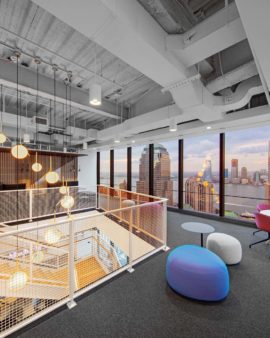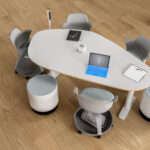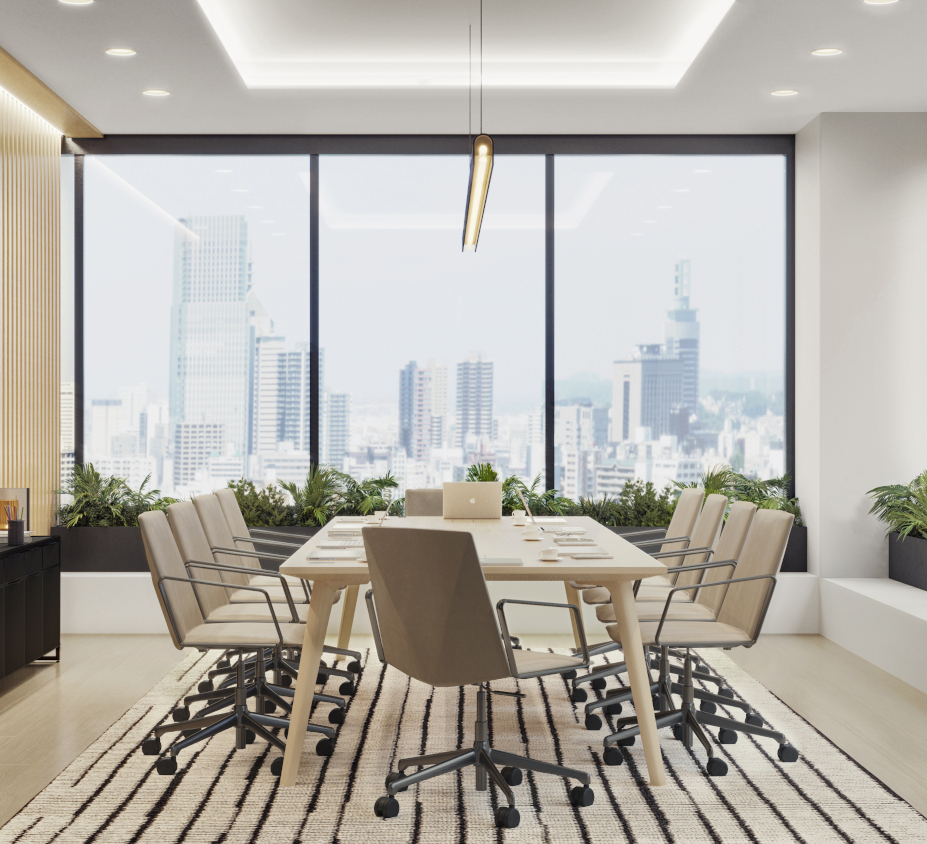Standardizing the Experience
With 73 years of experience, we have helped clients navigate through the complex decisions they face with planning and managing their national and global footprint. One of the most consistently successful strategies we have experienced is the implementation of a furniture standards program.
In this post, we outline some of the benefits and reasons why you should consider implementing a similar program.
BRAND IN THE WORKPLACE Developing a furniture standards program can help align facilities worldwide with a consistent branded environment and ‘look and feel’ within each facility.
Consistency Across The Globe: From North Carolina to Asia-Pacific, a consistent experience within all locations can be vital. However, each location should be adjusted to accommodate for local cultural differences that may exist within each country.
Culture & Employee Engagement: Aligning brand and culture with workplace design allows the employees to live and breathe the brand and be better aligned to the corporate mission. A recognizable branded interior can further enhance employee brand evangelism through sharing and pride.
PLACE WINS TOP TALENT Well-executed standards can aid in planning and designing workspaces that enable better collaboration, concentration, experimentation and learning.
Place Matters, People Matter: Employees today want a workplace that provides choice and control over where and how they work. Standards can help enforce various workplace strategies across all locations.
Talent Competition: Companies are looking at their workplaces to provide their employees more reasons to come to the office vs. work remotely, to choose their company over another and to be motivated and inspired to work effectively and innovate.
SAVINGS WITH FLEX Today’s workspaces need an ecosystem of spaces designed to adapt and evolve over time, optimizing real estate while fostering higher levels of employee engagement.
Adaptable, Flexible Spaces: Create zones designed to accommodate and anticipate changing organizational and employee needs. This flexibility reduces the need to move or add real estate when current space is outgrown and can be standardized across all locations.
Define A Spec: Establish a benchmark for best practices globally across the company. Partner with a single source supplier to benefit from volume discounts and streamlined processes which ultimately speeds up a project’s life cycle and saves the company money.
STRATEGY FOR DRIVING SAVINGS A standards program combined with a detailed reuse strategy ensures complete accountability over assets and the related environmental impact.
Asset Management Is Key: Developing a clear asset management strategy can be crucial for lengthening the life cycle of your product investments while also reducing waste.
Shared Kit-Of-Parts: Consider products that employ a similar kit-of-parts which can be redeployed as locations expand or are consolidated.
KEYS FOR BUILDING STANDARDS Furniture standards documents can vary depending on the brand and objective, but overall we’ve seen success when implementing these key features.
A Unifying Brand & Culture Statement: Scripting a clear and concise statement about how the desired aesthetic, design and products relate back to your brand can help to directly align your space with your culture.
Detailed Product/Typical Info: Give as much detail as necessary when listing each product and typical. This can include: manufacturer, model, finish/fabric, dimensions, pricing and a clear image or rendering of the product.
Range Of Products Per Area: As the standards are built out, consider adding a range of products approved for each area or product type at a variety of price ranges. Picturing them side-by-side in a grid format allows for easy comparison.









